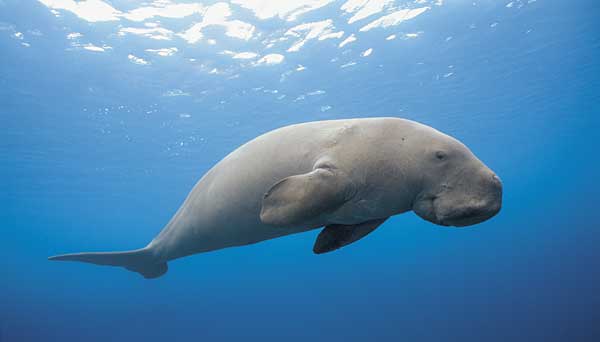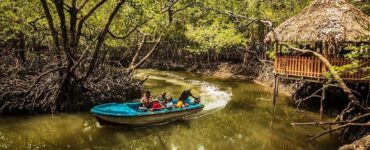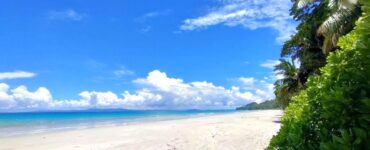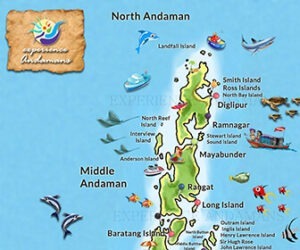Andaman is the island of adventures and rare species that will make you awestruck and wonder about the marvels of nature. One of the marvels of nature is cow which is sea and yet it is herbivorous known as Dugong. The dugong is the state animal of Andaman, also known as the sea cow, which can be found mainly in Little Andaman. It belongs to Dugongidae family and is the only species left but even this species survival is critical and declining o rapid rate due to poaching. It has a lifespan of 70 years and is popularly known as the Lady of the sea.
Characteristics of Dugongs
- Herbivorous Mammals: Dugongs along with other sirenians are referred to as “sea cows” because their diet consists mainly of grasses in the sea and are the only herbivorous mammals in the sea with the characteristics of that of a cow. They ingest the entire plant while eating including the roots and are mainly a docile animal that lives deep inside the sea. In Andaman, there are hardly 50 in number and their survival is the key concern for the government of the Andaman Islands.
- Thawtee: In Andaman Island, it is known as sea-pigs or pani-suwar (thawtee). The name given to this mammal is primarily because of its body frame, size and Though it may sound offensive but they are known as sea pig because of their eating habits.
- Back Defense: The defending part of Dugong’s body is their back, where most of the blubber is deposited. They are not very aggressive animals neither they attack small fishes nor they indulge in fights. They show their back to the attackers and predators which is their self-defense mechanism and helps them to easily escape the attack.
- Lekking: If you visit Andaman during the appropriate season you can see the race of male Dugong impressing a female partner by defending the area from other males, and this practice is known as lekking. They mature and become sexually active in between eight to eighteen years that is visible in males as the eruption of tusks because the testosterone levels are high.
- Reproduction and Birth Cycle: Females give birth to few offsprings during their lifespan and can reproduce one calf at a time. The gestation period is as long as 13–15 months and newborns are nearly 4 ft long and weigh around 30 kilograms (66 lb). Once born, they stay close to their mother for 14–18 months, possibly to learn swimming and to be nursed. During that duration, infants start feeding on seagrasses. Mother Dugongs are extremely caring towards their calf and defend it from the attack of other sea animals. In the period of growth, the mother teaches the calf to hunt, defend with back and how to emerge from the sea to breathe oxygen.
Why their life is in danger:
The dugong is found in waters of as many as 37 countries. It has been hunted for meat and oil for centuries which has led to decrease in their number. In India also, its meat is considered to be aphrodisiac and essential for oil. Currently, they are classified as vulnerable to extinction under the IUCN Red List of Threatened Species, as they are vulnerable to human activities due to their life history and dependence on seagrasses that are restricted to coastal habitats. Reasons for the waning population are habitat loss and squalor, gill netting, chemical pollutants, large-scale indigenous use and hunting.
India’s effort to save them:
The maximum population of Dugong is restricted to the Red Sea, followed by the Persian Gulf. Less than 200 dugongs are available and India is encouraging its neighbors in South Asia to sign the Dugong UNEP/CMS MOU as early as possible.
In Andaman:
In Andaman and Nicobar islands, dugongs are mainly found along “Dugong Creek” in the Little Andaman Island. The research findings tell us that although few in number, you can have their glimpse in other parts such as the Ritchies archipelago in Neil Island and some parts of Havelock group of islands, South Andaman (along Tarmugli, Jolly buoy and Rutland islands), North and middle Andaman (along White-Cliff, Reef, Landfall islands and Mayabunder region), in Hutbay and along the central group of Nicobar Islands There are about fifty dugongs that live in the Andaman and Nicobar region but their survival is critical as the corals are declining and poaching is increasing.
Commercialization of Dugong is a threat to already endangered species of Dugong and The Forest Department and Nature Conservation Foundation in association with the Andaman and Nicobar Environment team is attempting to conserve these animals and create a natural habitat that will help them to reproduce and live peacefully. Identifying the habitats of the mysterious species and creating awareness amongst the local people like the fishermen, boat owners, and others to reduce poaching-related threats is the first step towards preserving these docile sea mammals.
To conclude, the state animal of Dugong is undoubtedly the rare water mammal found in India and abroad but the threat of extinction and commercialization of the dugong trade may lead to its extinction. So apart from government initiatives, even localities and tourists should spread awareness regarding this animal and help to create a natural environment for it to breed and live. Being the heritage of Andaman many divers visit the island in hope to see this sea animal and if you are amongst those then book your package now.


















Add comment